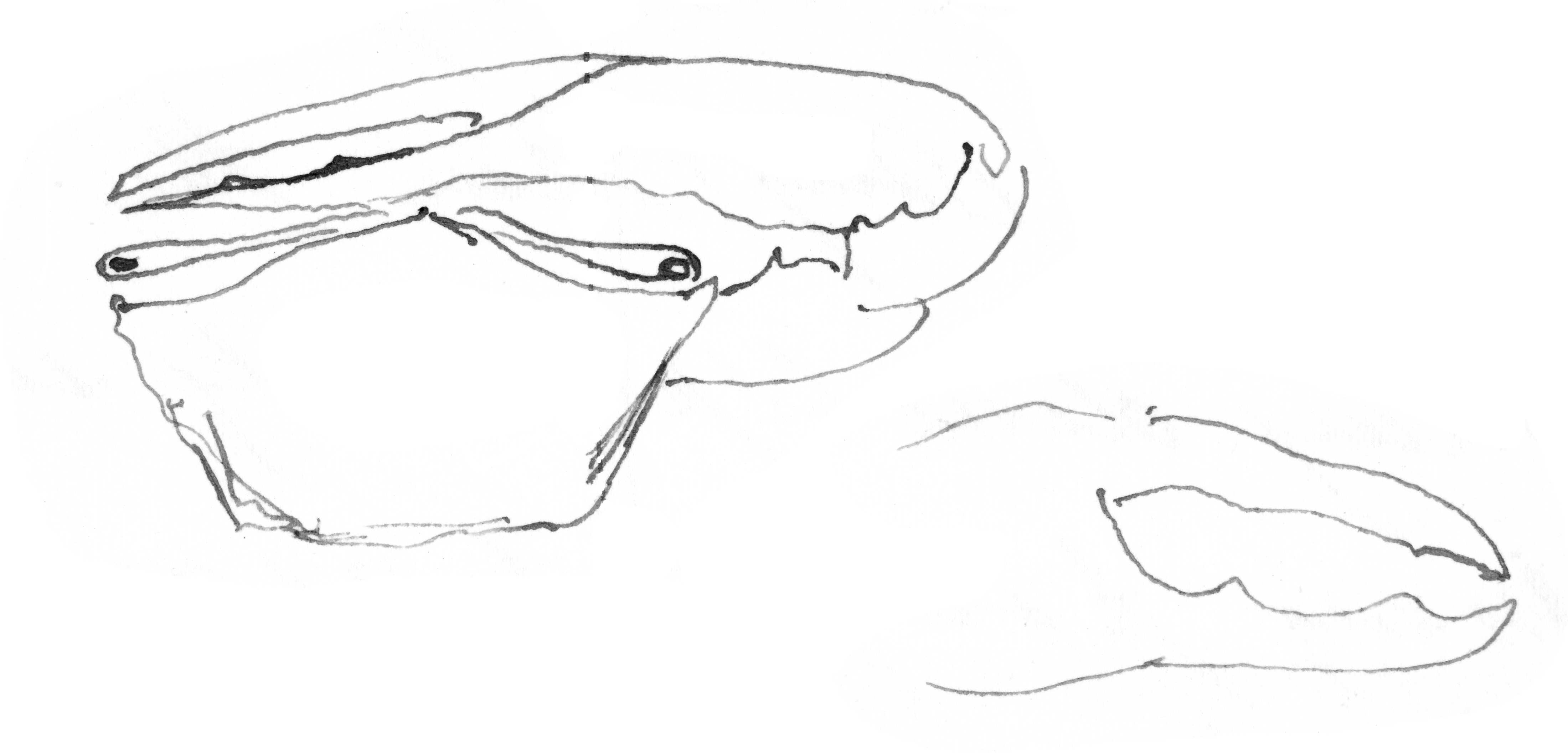From C. S. Bate [17 February 1868]1
8, Mulgrave Place, | Plymouth.
My dear Sir
My observations were intended to apply to “Gammarus marinus” the common dull green species on the sea shore—2 When I have taken a quantity of these to-gether I have invariably found the adult males to be considerably fewer in number than the females. It may be that among the many, that I took to be females some were males not fully mature, but the mature males are larger than the females. This reminds me that I have noticed that occasionally the adult males assume a yellowish color. I do not remember ever having found a female other than olive green.3
I said that Gammarella has I thought large hands in the male, small in the female—4 I certainly think that in crustacea females are decidedly more abundant than males I can only give my opinion as on British, because exotic, specimens are generally selected by the collectors & the finest & most peculiar are taken— Thus in a bottle of Gelasimi5 that I have just opened from Singapore I find five males & one female I have little doubt but that the collector (Dr Collingwood)6 chose those that had the large claws as being the more interesting— In These Gelasimi, which I have only observed since I last wrote, I find that the Great claw is invariably of a Salmon color along the under or immovable finger. Now in the (one) female I find no color what ever, except the universal green which may be a shade lighter than that of the male. The specimens are in spirits.
According to my experience the large claw is invariably on the Right side. I think every author so figures it except Milne Edw. & I should have thought his to have been the result of the engravers forgetting to reverse the figure, but that Mr Edwards says, that it is “sometimes on the right side & sometimes on the left”.7 The right side is undoubtedly the more constant
The left or small hand is as far as my experience goes of the same form as those of the female & these are both alike. My belief is that should the male in a young state lose or injure the right or large hand, why! then the left may develope itself into the more powerful organ—
In retiring into a hole the large hand must block up the hole from its size: therefore I do not see the weight of M. Edwards quotation of M. Marion de Procé.8 You are probably aware that in some Gelasimi the hand can be of no use in feeding itself in as much, that the claw is so large that it cannot be brought to reach the mouth—9 In this Singapore species before me, the hand passes far beyond the mouth,

the fingers moreover can only meet at the apex & which apex cannot be brought near the mouth.
In the common shore crab “Carcinus mænas” copulation takes place when the female has cast its shell & is in a soft state, previously the male carries her about hugged close under him, the dorsum of the female against the sternum of the male but in this act I have seen some of the smaller legs passed round the female, & if the larger ones are used they only embrace the female, not bite her. During copulation she being soft would be liable to injury from the compression of the nippers— Besides the chelæ are free for defensive protection. I think the male catches the female with the chelæ but holds her with his arms & legs. They, if left alone, lie quietly, but if disturbed the male runs actively, carrying the female with him.10
I think I am correct in asserting possitively that the females are the more abundant & have smaller claws in the following species11
Porcellana longicornis
Cancer pagurus.
Porcellana platycheles
Eurymone aspera
Galathea andrewsii
Corystes cassivelaunus12
Among the Portunidæ or swimming crabs the size of the chelæ are nearly of one size in the two sexes. I think that this holds good among most of the larger swimming crustacea, such as prawns &c
You may use my statements as you think proper. They are based upon personal observation, but I have never numerated the proportions but merely state my recollection & impressions
Believe me my dear Sir | Yours very sincerely C Spence Bate
CD annotations
Footnotes
Bibliography
Collingwood, Cuthbert. 1868. Rambles of a naturalist on the shores and waters of the China Sea: being observations in natural history during a voyage to China, Formosa, Borneo, Singapore, etc., made in Her Majesty’s vessels in 1866 and 1867. London: John Murray.
Descent: The descent of man, and selection in relation to sex. By Charles Darwin. 2 vols. London: John Murray. 1871.
Marginalia: Charles Darwin’s marginalia. Edited by Mario A. Di Gregorio with the assistance of Nicholas W. Gill. Vol. 1. New York and London: Garland Publishing. 1990.
Milne-Edwards, Henri. 1834–40. Histoire naturelle des crustacés, comprenant l’anatomie, la physiologie et la classification de ces animaux. 4 vols. Paris: Librairie encyclopédique de Roret.
Summary
On the proportion of sexes in crabs; coloration and structural differences.
Letter details
- Letter no.
- DCP-LETT-5826
- From
- Charles Spence Bate
- To
- Charles Robert Darwin
- Sent from
- Plymouth
- Source of text
- DAR 82: A61–4
- Physical description
- ALS 8pp †
Please cite as
Darwin Correspondence Project, “Letter no. 5826,” accessed on 24 April 2024, https://www.darwinproject.ac.uk/letter/?docId=letters/DCP-LETT-5826.xml
Also published in The Correspondence of Charles Darwin, vol. 16


